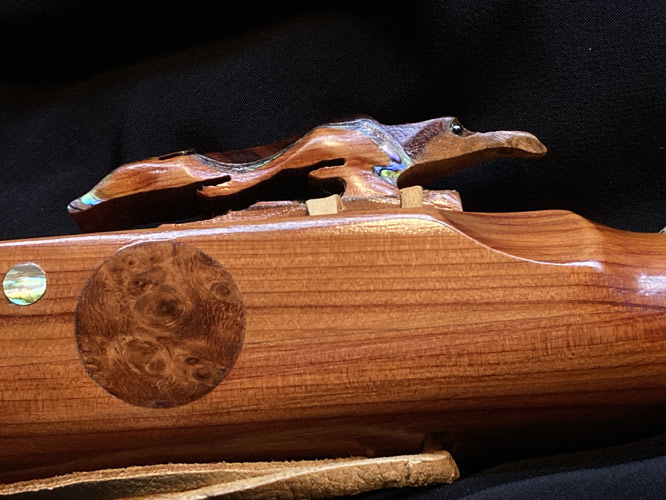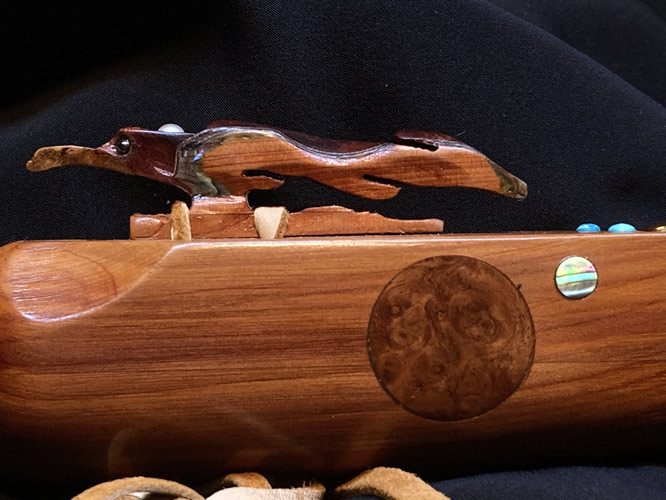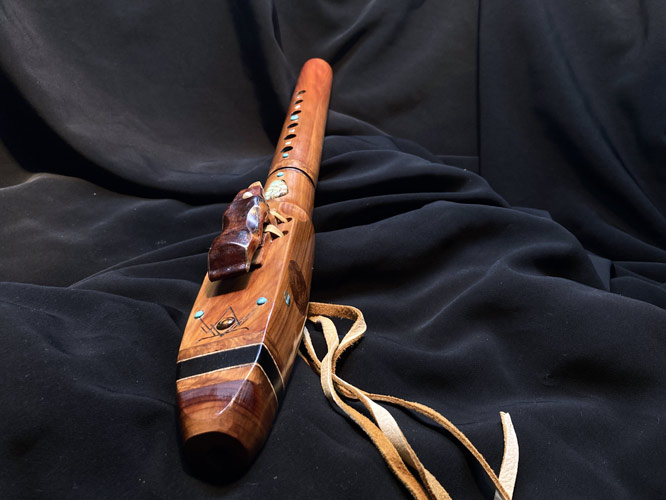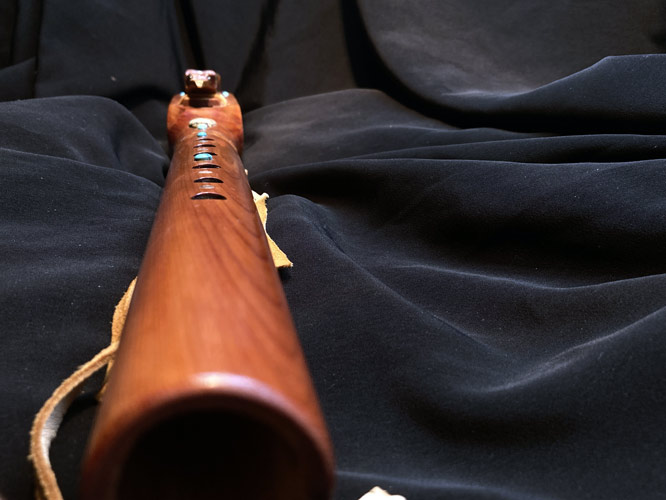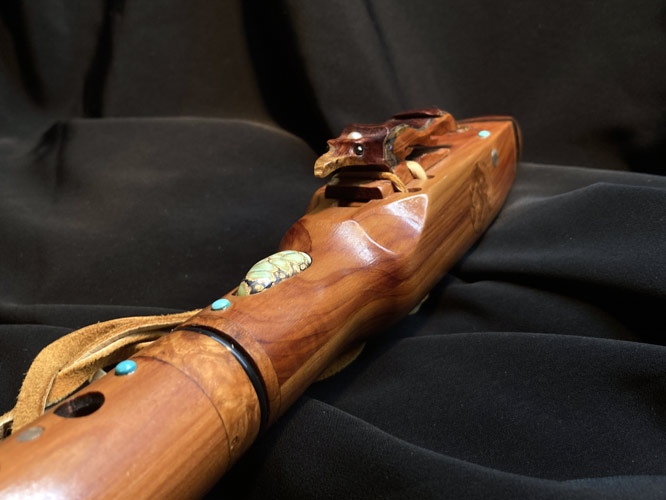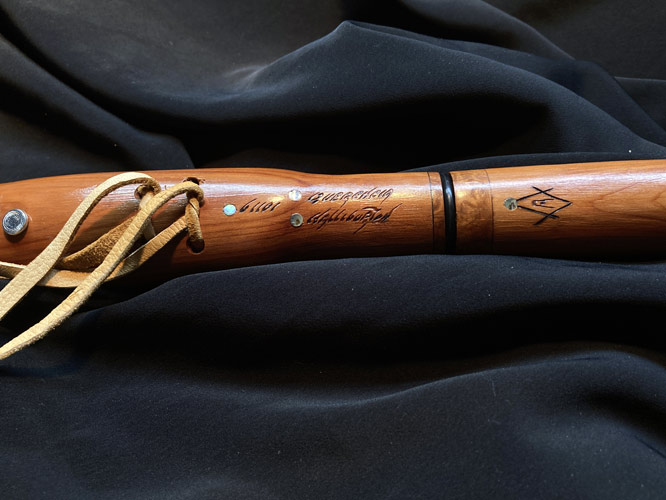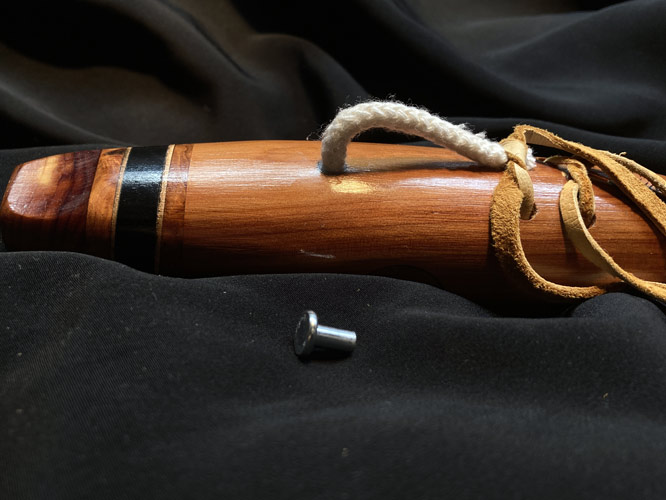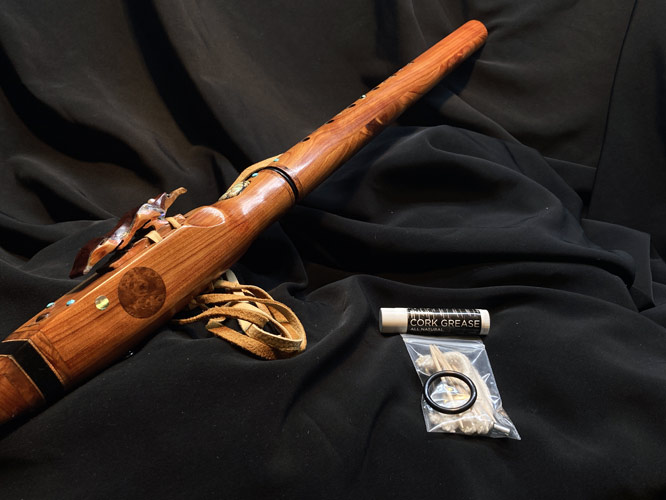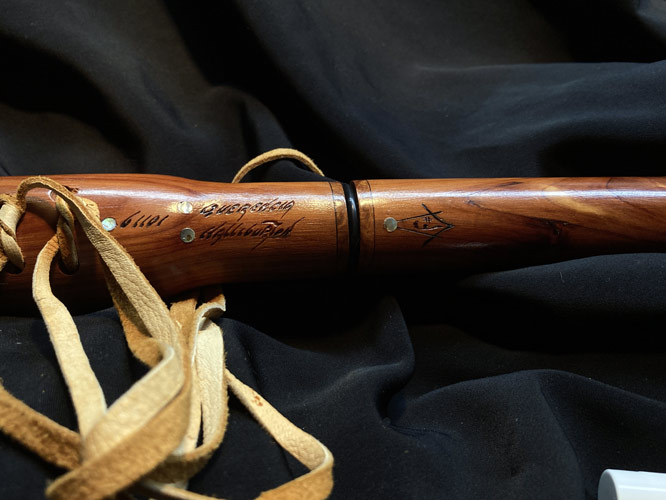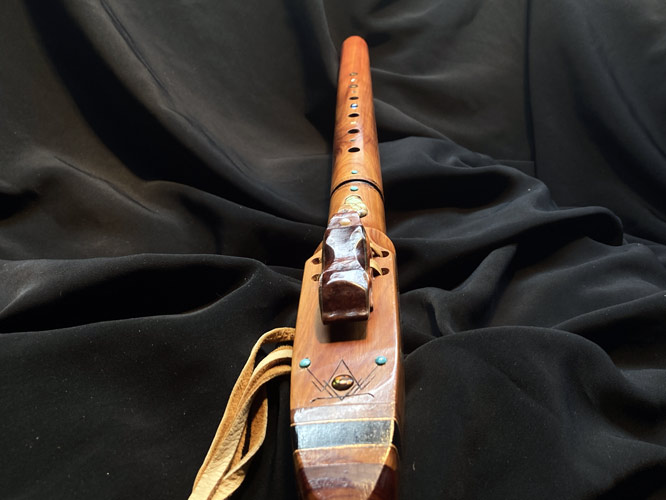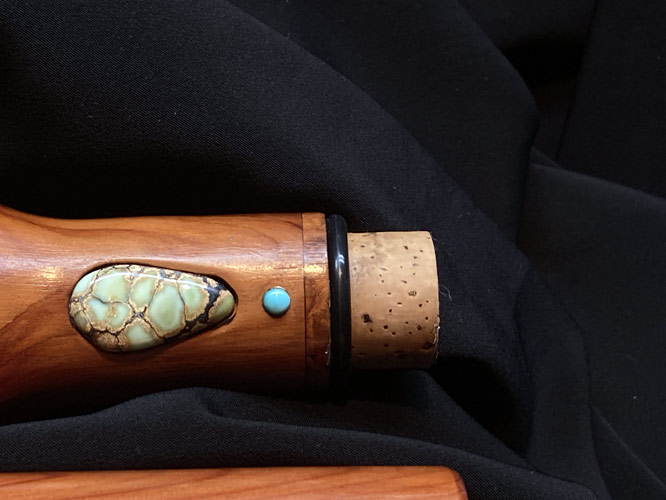$660.00
FREE DOMESTIC SHIPPING
Oklahoma red cedar Am/F#m
1 in stock
I’m no marketing genius, and I can prove it. This flute has interchangeable barrels, and wet-out wicking, so with one headstock and two barrels, one flute gets you two keys, and you can play them for hours. I didn’t invent this, and mine don’t come in a fancy presentation box, but mine are entirely hand made, and don’t cost $2000.00 USD.
The bore diameter for this flute is 7/8”, and the overall length with the Am bbl is 18-1/4”, while the F#m bbl takes the length out to 21-3/16”.
The mouthpiece is crafted of African ebony and sheet copper, between layers of SE Asian amboyna burl, capped with the cedar. The fetish is cut from the amboyna burl wood, bonded to an Oklahoma cedar base, with wing overlay of Paua abalone and addl. cedar.
Inlay, beginning at the mouthpiece includes a stunning 8mm dome cut Mexican fire agate, flanked by 4.2mm old Tibetan turquoise cabs. Each side of the compression chamber is inset with 25mm disks of SE Asian amboyna burl, as well as 6mm disks of paua abalone. The barrels each have finger hole accents of 4mm abalone dots, while the F# barrel is inset with a 6mm dome cut rainbow topaz. By contrast, the Am barrel is accented with a dome cut 6 mm turquoise cabs. The foot end of the headstock includes a beautiful 14×21 mm turquoise cab from the Royston mine outside Tonopah Nevada. And lastly, the fetish includes a 4mm orange pearl set to the crown, with 2.4mm hematite beads set as eyes.
The F# barrel was tuned at a wood temp. of 74.1F, an air temp. of 72.5F, and humidity of 66%. The Am barrel was tuned at a wood temp. of 73.3F, air temp of 71.8F, with both tunings at sea level.
Learn to assemble your flute properly.
- Make sure that the mating surfaces are free of debris and grit.
- Line up the joints so that they are straight and gently push them together with a twisting motion. Never force. The turquoise cabs should align and the barrel should be completely seated for an air tight fit.
- If you start having trouble lining them up, gently take off the end that has the problem and clean the joint with a soft cloth, which you should be doing frequently anyway. Never use lipgloss or vaseline to ease the joints of the flute together. It will give you a quick fix, but later down the road will give you much more trouble than it’s worth as dust/dirt and grime will build up much quicker when they have something to adhere to.
- The flute includes cotton wicking material, instructions for its use, and an aluminum plug, should wet out be a non issue.
1 in stock

